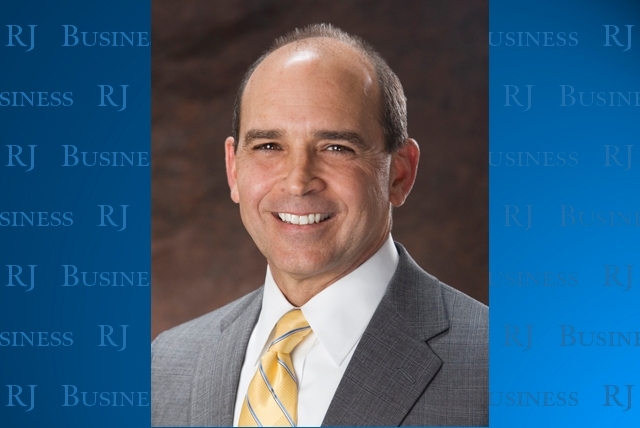Small businesses have options on employee retirement plans
TruFusion just wants to be different.
The fitness studio, under construction in south Las Vegas, is developing proprietary classes to go with the hot yoga, hot Pilates, boot camps and TRX sessions it’ll offer when it opens in August.
But TruFusion isn’t just trying to set itself apart with its own courses. It’s also looking to offer an employee benefit unusual in its industry. After its first year, the company will give employees stock options through a profit-sharing program to help them save for retirement. Full-time employees would be vested after five years. People who stay with TruFusion for a decade would lock in profit-sharing in perpetuity, owner Luke Hoffman said. The idea? To get employees invested in the company’s future.
“Someone just getting a salary might not dig a little deeper into the success of the business,” Hoffman said. “This way, there’s no limit on what they can make.”
With a starting head count of 10 full-time workers, Hoffman’s business would be unusual for its retirement benefit. Numbers from the U.S. Bureau of Labor Statistics showed that just 42 percent of businesses with one to 49 workers offered a plan as of March 2012. Compare that to 91 percent among companies with 500 or more workers, and 76 percent among businesses with 100 to 499 employees.
Blame both perception and reality for the shortage of programs among small businesses.
Julie Stich, director of research for the International Foundation of Employee Benefit Plans in Wisconsin, said most small-business owners think launching a retirement plan would be too time-consuming.
“Typically, a small employer is in the trenches, creating their product or doing their service,” Stich said. “They’re not benefits or HR people. They may not even have an office manager, and they’re likely doing a lot of the work on their own. So they’re probably concerned that setting up a retirement plan will take time and expertise they may not have.”
And then there’s the reality of cost. Sure, a small business doesn’t have to match its workers’ plan contributions, but it’s not free to open and manage accounts.
Still, it’s worth it to try, experts said. There are retirement programs that small businesses can afford, and providing a plan could pay dividends in employee appreciation.
“Just helping to provide retirement security for employees down the road is a positive thing that makes your employees feel good,” Stich said. “And it’s definitely a good recruitment and retention tool for employees, particularly if you’re looking to differentiate your company from other small businesses that compete with you for quality employees.”
That was the case at Johnson Jacobson Wilcox. The Las Vegas accounting firm has offered a 401(k) with profit-sharing since it opened in 1995 with 12 employees. Today, it has 24. Managing partner Gary Johnson said the plan helped distinguish the firm from its competitors.
But retirement plans aren’t for every small business. Before you jump in, consider what your employees want, and what kind of program would be most cost-effective.
Start with those employees. It’s pointless to offer a benefit if no one enrolls, said Mark Frydman, vice president of Lebenson Actuarial Services, a Las Vegas company that administers retirement plans. If just five of your 40 employs sign up, nobody gets a big bang for their buck.
“Some businesses set up a 401(k), and very few people participate,” Frydman said. “But they’re paying ongoing administrative fees, and 401(k)s tend to be very labor-intensive. Employers need to be honest with themselves. There’s a lot of time and energy and labor around it, and you have to ask whether it’s worth it.”
That’s why Stich recommends surveying employees to gauge interest. You’re likelier to find demand for a plan if you’re in professional services, where salaries are relatively large, than if your operation has a lot of lower-paid workers, Johnson said.
“Typically, your higher-paid employees are going to value a retirement-plan benefit,” he said. “A lot of times, especially in this economy, your rank-and-file employees aren’t looking for retirement benefits as much as a bigger paycheck.”
If you know your employees want a plan, then it’s time to ask yourself a few questions, Stich said. Thousands of pages of laws and regulations govern most plans, and you could face penalties or other sanctions if you roll out a program and end it quickly. Most important , make sure you have the cash flow to sustain contributions to employee accounts.
Whether you can keep up with the program depends partly on what kind of plan you go with.
The best-known option is the 401(k), an investment vehicle that lets employees sock away retirement dollars on a pre-tax basis, and that lets companies match those contributions.
It could cost $1,200 to $1,500 for a plan administrator to meet with your business, discuss your goals, explain your best option and draft plan paperwork, Frydman said. Expect to spend $1,500 to $5,000 a year in accounting fees and administrative costs. And then there’s matching. You may be tempted to skip matching, but doing so can foil your plan, Frydman said.
“Plans go dead when there’s no match,” he said.
Instead, budget a match of 10 cents for every dollar contributed. That would be $5,000 on $50,000 in contributions.
“It’s usually not a lot once you start calculating it comparatively,” Frydman said.
If it still sounds too costly for you, think about a simplified employee pension plan (SEP). A SEP lets you directly deposit up to 25 percent of a worker’s income into an IRA. They’re much easier to set up than a 401(k), Johnson said, because they have no IRS filing mandates, and they don’t require you to educate employees on investment strategies. You can vary your contribution each year, but you do need to give equal amounts to each staffer.
Another alternative is the Savings Incentive Match Plans for Employees (SIMPLE) IRA. As with SEP plans, there’s no filing requirement, but you must match as much as 3 percent of an employee’s pay.
You can also start a basic payroll-deduction IRA, which sets up an automatic sweep from the employee’s paycheck into a retirement account. Employers don’t match or contribute, an arrangement the IRS describes as “no fuss, no muss,” but that also may not get you much credit with your workers, the agency said.
And like other programs, profit-sharing — giving employees a cut of profits — has its pros and cons. On the plus side, you can pair profit-sharing with other plans, such as a 401(k), and your contributions are discretionary and flexible. Just make sure you have a set formula for dividing contributions, so you don’t discriminate in favor of highly paid executives or key people. You’ll also need to file with the IRS each year.
Before you choose a plan, consider talking it over with a plan administrator. The consulting fees you pay would be “a drop in the bucket” compared with the legal and tax exposures you face if you get your plan wrong, Frydman said.
Despite the administrative hurdles, TruFusion, at least, is going full speed ahead. The fitness studio plans to open multiple locations in coming years, and all of its full-time workers will be able to opt in to profit-sharing.
“The fitness industry has always been very fragmented,” Hoffman said. “You have instructors running all over town trying to teach at different places, and when they quit working, they get nothing. We want to create a home. We want to be the place to work out, and the place to work at, in this industry.”
Contact reporter Jennifer Robison at
jrobison@reviewjournal.com or 702-380-4512.
Follow @J_Robison1 on Twitter.






























